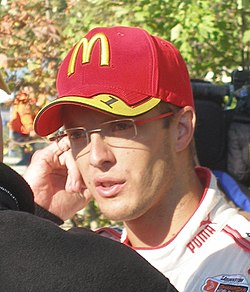The 2002 International Formula 3000 season was the thirty-sixth season of the second-tier of Formula One feeder championship and also eighteenth season under the International Formula 3000 Championship moniker. It featured the 2002 FIA Formula 3000 International Championship which was contested over twelve races from 30 March to 14 September 2002. Championship titles were awarded for both Drivers and Teams.
Contents
- Teams and drivers
- Calendar
- Championship standings
- Teams Championship
- Race results
- Notes
- References
- Further reading
- External links
